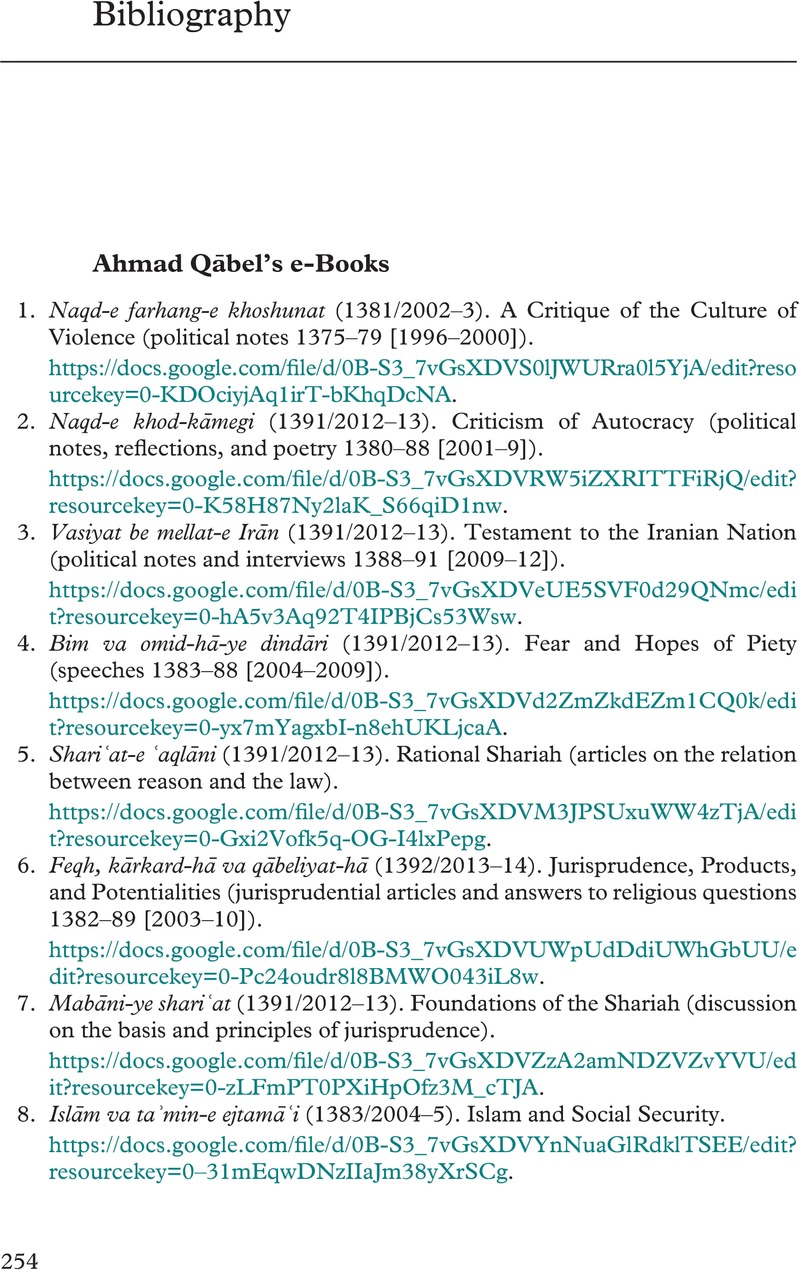Book contents
- Ahmad Qābel and Contemporary Islamic Thought
- Ahmad Qābel and Contemporary Islamic Thought
- Copyright page
- Dedication
- Contents
- Introduction
- 1 Biography of Ahmad Qābel
- 2 Jurisprudence
- 3 History
- 4 Politics
- 5 Gender
- 6 Apostasy and Freedom of Religion
- 7 Society
- 8 Superstition
- Conclusion
- Book part
- Bibliography
- Index
- References
Bibliography
Published online by Cambridge University Press: 30 March 2023
- Ahmad Qābel and Contemporary Islamic Thought
- Ahmad Qābel and Contemporary Islamic Thought
- Copyright page
- Dedication
- Contents
- Introduction
- 1 Biography of Ahmad Qābel
- 2 Jurisprudence
- 3 History
- 4 Politics
- 5 Gender
- 6 Apostasy and Freedom of Religion
- 7 Society
- 8 Superstition
- Conclusion
- Book part
- Bibliography
- Index
- References
Summary

- Type
- Chapter
- Information
- Ahmad Qābel and Contemporary Islamic ThoughtRational Shariah in Twenty-First-Century Iran, pp. 254 - 274Publisher: Cambridge University PressPrint publication year: 2023



